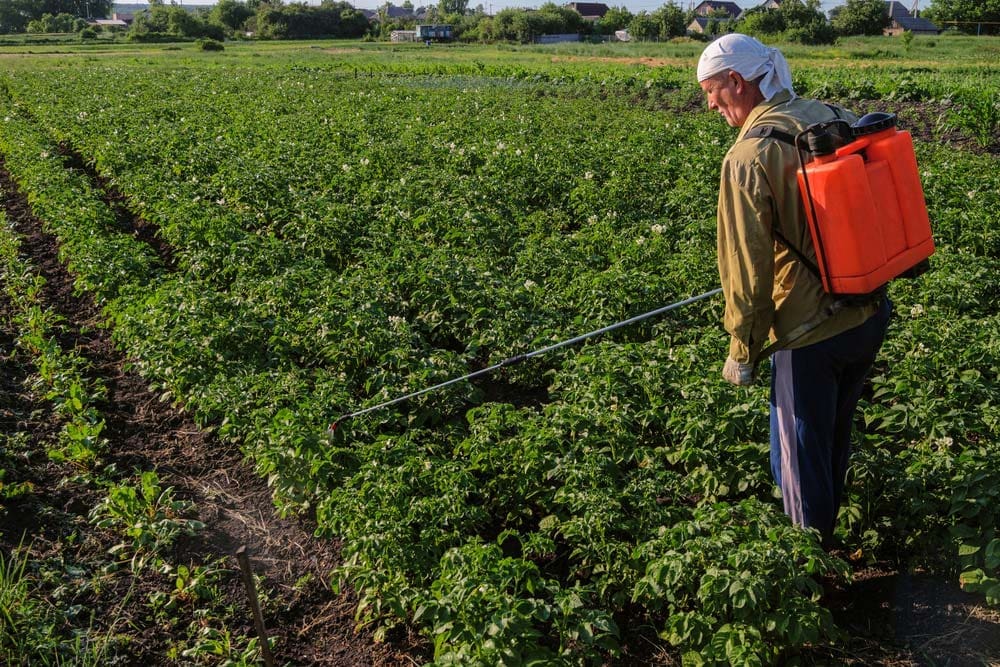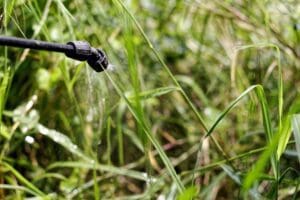Introduction
Paraquat, also known as paraquat dichloride, is one of the popular herbicides in the United States. Approximately 12 million pounds of paraquat was used for weed and grass control in the US in 2018 alone, according to the United States Geological Service. Paraquat is mainly applied on crops such as pasture and hay, alfalfa, orchards and grapes, rice, vegetables and fruit, cotton, wheat, soybeans and corn.
However, paraquat can only be used by those who are licensed. This is because paraquat is a highly toxic chemical. It is even sold in the US with a blue dye, strong odor and vomit-inducing agent so that people will not confuse it with beverages. It is lethal when swallowed and can cause lung damage when inhaled, with long-term exposure leading to pulmonary fibrosis and a disease called paraquat lung. Since 2012, there has been one death each year due to paraquat poisoning in the US. In total, over 200 individuals have been dangerously exposed to paraquat, resulting to more than 27 deaths, in the country based on a 2019 article in the journal Environmental Health.
What is paraquat?
Paraquat dichloride is a quaternary herbicide that was first used in 1882 but only became commercially available in 1962 under the name Gramoxone which was produced by Imperial Chemical Industries. At present, two of the well-known companies that manufacture paraquat include Syngenta and Chevron Chemical Company.
Also known as methyl viologen, its chemical name is 1,1′-dimethyl-4-4′-bipyridinium dichloride. It targets the photosynthetic process in green plants. Paraquat disrupts the electron flow in photosynthesis and then produces superoxide radicals leading to cell death which kills plants. This weed killer is non-selective and is applied as a contact herbicide on plant foliage. On soil paraquat is readily deactivated.
Paraquat is mainly used for controlling weeds and grasses in industrial and agricultural settings. It is commonly applied to eliminate perennial and annual weeds thriving among cocoa, soybean, rice and cotton crops. It is also used for pre-harvest desiccation and defoliation of cotton and other crops.
Why is paraquat so deadly?
Paraquat poisoning usually occurs through ingestion of this weed killer. People may ingest paraquat mixed with food and beverages knowingly or unknowingly. Even consumption of food or drinks contaminated with paraquat is enough to poison people. People can also be exposed to paraquat through skin contact or breathing in the chemical. Thus, these types of exposure can lead to varying extents of paraquat poisoning. The following are the effects of paraquat poisoning according to a paper published in the British Journal of Clinical Pharmacology.
The first kind of damage due to paraquat is direct and through contact with surfaces of mouth, stomach and intestines. However, damage is not restricted on these areas since paraquat is readily absorbed throughout the body. Paraquat reacts with the different components of the body to produce chemicals that damage tissues and organs.
According to the Centers for Disease Control and Prevention (CDC), upon exposure the individual immediately experiences pain and swelling on the exposed surfaces of the body, typically the mouth and throat linings. The person then displays signs of gastrointestinal problems that include vomiting, nausea, stomach pain and diarrhea. Blood may be present in the feces. If the paraquat exposure is severe, the patient may exhibit signs of dehydration, electrolyte imbalance and hypotension or low blood pressure.
The immediate effects of severe paraquat poisoning can be manifested by the following signs and symptoms within hours or few days after exposure: confusion, kidney failure, rapid heart rate, coma, liver failure, heart injury, muscle weakness, lung scarring, breathing failure, pulmonary edema and seizures. Within several days or weeks, persons with severe paraquat poisoning may suffer from lung scarring, liver failure, kidney failure and heart failure.
The toxicity of paraquat results from its redox-cycle processing which subsequently produces reactive oxygen species. Four enzymes metabolize paraquat in the body, after which mono-cation radicals are produced. This process, in turn, generates superoxide, hydroxyl free radical, peroxinitrite and nitric oxide. Such production of reactive nitric and oxygen species is what causes damage to many organs, especially the lungs.
In the lungs, paraquat causes acute alveolitis, vascular congestion, alveolar collapse and death of lung cells. In the kidney, paraquat causes necrosis due to formation of large vacuoles in the tubules. In the liver, congestion and injury results from damage to mitochondria and degranulation of endoplasmic reticulum.
Paraquat is highly fatal because of its extreme toxicity and the absence of effective treatment according to the same article from the British Journal of Clinical Pharmacology. There is no universal guideline for treating paraquat-poisoned individuals. All healthcare providers can do is provide hemodialysis, hemoperfusion, anti-oxidant therapy and immune modulation. Even with the provision of these treatment methods, the overall fatality due to paraquat poisoning remains over 50%. It has been reported that only six out of 26 patients survive from ingesting 103 mg/kg of paraquat after three days of treatment. In fact, one sip of paraquat has been found to be enough to kill a human.
Why is paraquat still allowed in the USA?
Paraquat is so deadly as explained above, however, it still available in the United States for those who have license to use it. Paraquat has already been banned in other countries. In Europe, paraquat has been prohibited since 2007. So, it remains interesting that paraquat is still allowed in the US.
Takeaway points
Paraquat is a weed killer that is also extremely deadly to humans. One sip of this popular herbicide is enough to kill a person. Once ingested, it immediately damages the kidney, liver, heart and lungs so even survivors are left with debilitating effects. Despite these ill effects, paraquat is still sold in the US.
Only licensed commercial applicators can buy paraquat in the US. This means that other people can still be exposed to this herbicide. The public can be exposed to paraquat in places where it is being used such as in agricultural farms and in industrial settings. To prevent paraquat poisoning, individuals who are exposed to the weed killer should remove their clothing, wash their skin thoroughly and dispose of contaminated materials.
If you have been exposed to paraquat and have experienced symptoms indicating kidney, liver, heart and lung damage a mass tort attorney can help make Syngenta, Chevron Chemical Company or other companies take responsibility and alleviate your financial burden.




